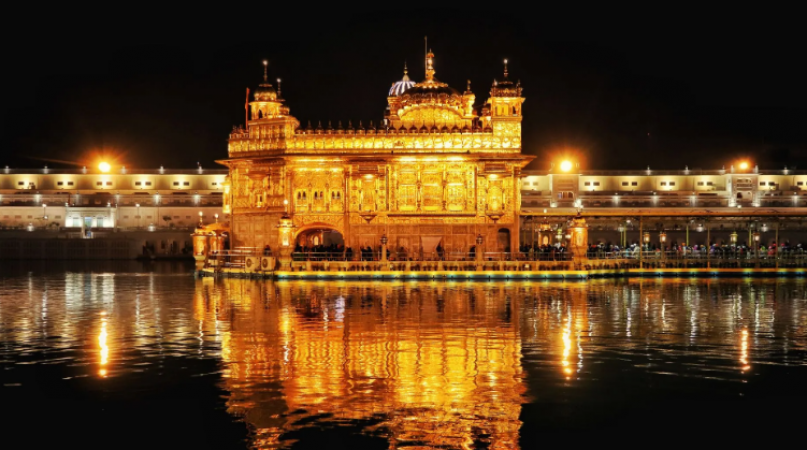
The Golden Temple, also known as Sri Harmandir Sahib, is a revered religious site located in Amritsar, Punjab, India. It is the most significant and holiest Gurdwara (Sikh place of worship) in the world. Built with gold-covered exterior walls, the temple's grandeur, and spiritual significance draw millions of devotees and tourists every year. This article delves into the captivating history of the Golden Temple, its architectural marvels, and the rituals and practices followed by devotees during their worship.
History of the Golden Temple:
The origins of the Golden Temple trace back to the 16th century when Sikhism was in its nascent stages. Guru Nanak Dev, the founder of Sikhism, visited the area where the temple stands today and meditated by the sacred pool. The temple complex gradually took shape under the guidance of subsequent Sikh Gurus. The construction of the Golden Temple was completed in the 18th century under the leadership of Guru Arjan Dev, who envisioned it as a central place of worship for Sikhs.

Architectural Marvels:
The Golden Temple's architecture is a unique blend of Islamic and Sikh styles. The main structure, surrounded by the Amrit Sarovar (holy pool), represents the abode of spiritual enlightenment. The temple's exterior is covered in pure gold, giving it a resplendent appearance. The central building, adorned with intricate designs and inscriptions from the Guru Granth Sahib (the Sikh holy scripture), is an awe-inspiring sight.
Worship at the Golden Temple:
Devotees from all walks of life visit the Golden Temple to seek spiritual solace and participate in religious practices. The Sikh principles of equality, service, and selflessness are central to the worship experience at the temple. The day begins with the Prakash (opening ceremony) of the Guru Granth Sahib, followed by the continuous recitation of Gurbani (hymns from the scriptures). The langar (community kitchen) is a unique feature of the Golden Temple, where free meals are served to all visitors regardless of caste, creed, or social status.
Devotional Practices:
While worshiping at the Golden Temple, devotees engage in various devotional practices. The most common form of worship is Ardas, a prayer in which devotees express their gratitude, seek blessings, and offer supplications. The process of Kar Seva (voluntary service) is also prevalent, where devotees participate in the maintenance and cleaning of the temple complex. Many devotees take a dip in the Amrit Sarovar, believing in its purifying properties.
Festivals and Celebrations:
The Golden Temple is a hub of festivity throughout the year. Major Sikh festivals such as Gurpurabs (birth anniversaries of Sikh Gurus) and Vaisakhi (harvest festival) are celebrated with great fervor. The temple's surroundings come alive with vibrant processions, devotional singing, and heartfelt prayers during these occasions. The atmosphere is charged with spiritual energy and unites devotees in a shared sense of devotion.
Significance and Impact:
The Golden Temple holds immense spiritual and cultural significance for Sikhs worldwide. It serves as a beacon of Sikhism, spreading the message of peace, equality, and unity. The temple's history is intertwined with significant events in Sikh history, including the martyrdom of Guru Arjan Dev and the Jallianwala Bagh massacre. The Golden Temple has withstood the test of time and remains a symbol of resilience and unwavering faith.
The Golden Temple stands as a testament to the enduring faith and rich heritage of Sikhism. Its golden facade, serene environment, and egalitarian practices make it a cherished pilgrimage site for millions. The temple's history, architectural splendor, and devotional practices offer a captivating and transformative experience for all who visit. The Golden Temple shines not only as an architectural marvel but also as a spiritual sanctuary, fostering love, compassion, and universal brotherhood.
Sawan Adhika Maas Starts on July 18, 2023
The Moche Civilization: Unveiling Peru's Intricate Pottery and Art
Why should non-vegetarian food should not be eaten in the month of Sawan?